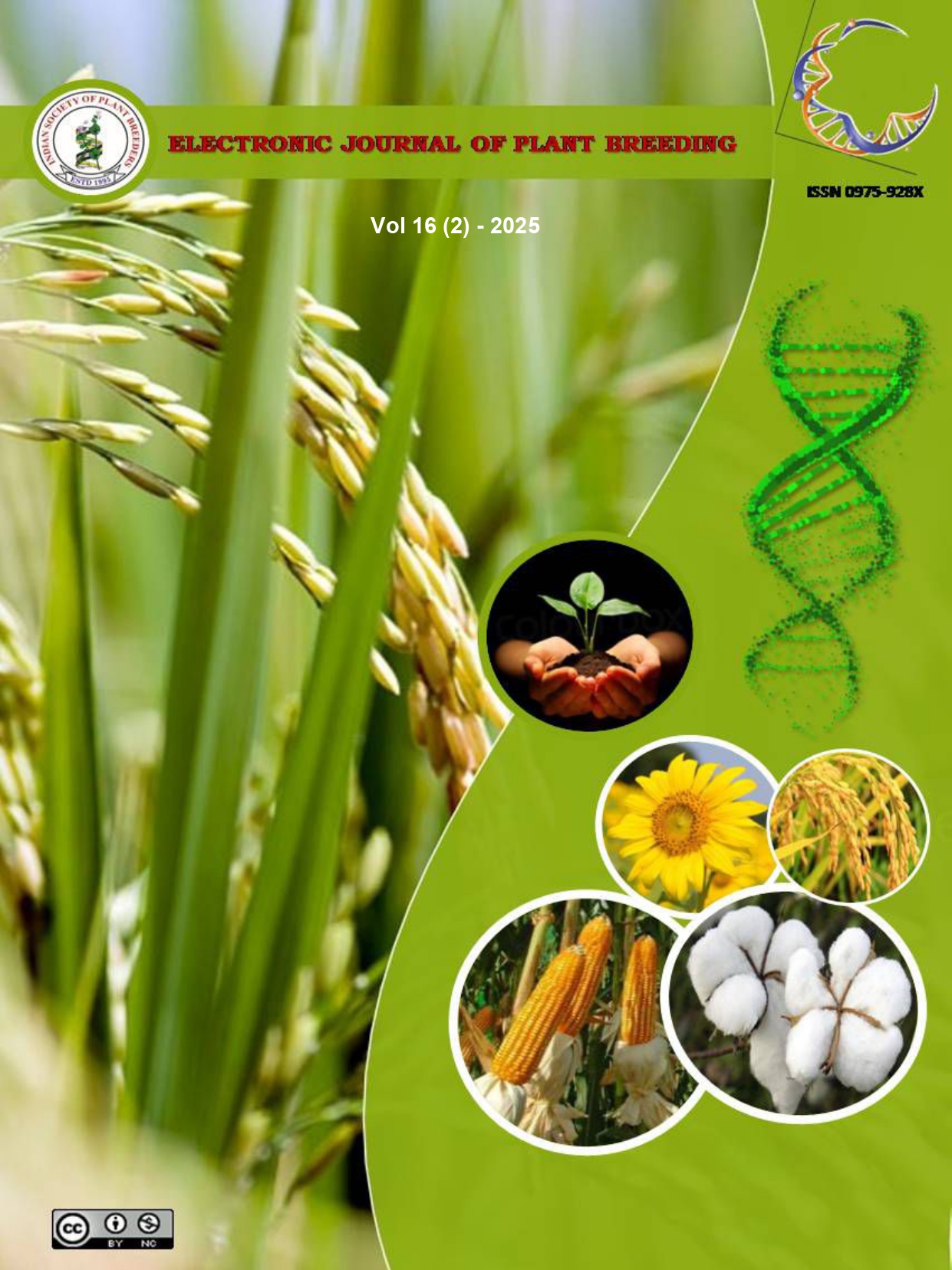Inquisition on principal component and K- mean clustering analysis for yield and its contributing traits of bread wheat (Triticum aestivum L.)
DOI:10.37992/2025.1602.029
Abstract
An experiment was conducted to assess genetic diversity via K cluster and principal component analysis (PCA) for yield and its contributing characters in 41 bread wheat genotypes at Crop Research Farm, Nawabganj, Chandra Shekhar Azad University of Agriculture & Technology, and Kanpur (U.P.) during Rabi season 2020-21. K- Clustering statistics was used to analyse the genetic divergence in the present group of material. All the 41 genotypes were classified into seven clusters. Cluster I comprised of ten genotypes, cluster II comprised of eight genotypes, cluster III of ten genotypes, clusters IV, V and VI consisted of two genotypes while cluster of VII had seven genotypes. Cluster-VII ranked first in days to maturity, productive tiller per plant, ear length and 1000 seed weight (gm). The maximum contribution towards the expressions of genetic divergence was exhibited by grain yield per plant (30.73%) followed by plant height (31.59%), chlorophyll content (13.41), number of spikelets per spike (6.95%), 1000 grains weight (5.73%), days to 50% flowering (4.63%), ear length (4.36%), days to maturity(1.83%) and number of grains per spike (0.61). Cluster I and VI are most desirable for breeding programme for creating the desired variability and the genotypes in these clusters deserve due consideration for improvement of traits like chlorophyll content, plant height and spike length. The outcomes of this study can contribute to the strategic development of wheat breeding initiatives aimed at exploiting heterosis.
Keywords: Wheat, PCA, genetic diversity, cluster analysis, grain yield.
Inquisition on principal component and K- mean clustering analysis for yield and its contributing traits of bread wheat Triticum aestivum L.
. 2025. Electronic Journal of Plant Breeding, 16 2, 234-240. Retrieved from https://ejplantbreeding.org/index.php/EJPB/article/view/5276It is certified that:
- The corresponding author is fully responsible for any disputes arising due to the publication of his/her manuscript.
- The article has been seen by all the authors who are satisfied with its form and content.
- The sequence of names of authors in the by-line is as per their relative contribution to this experiment, giving due credit to all scientists who made notable contribution to it.
- All the authors fully understand that inclusion of any other co-authors or exclusion of any co-authors is not possible once the article has been submitted to the journal.
- The corresponding author takes full responsibility for this article.
- The address of the organization where the research was conducted is given.
- The article is exclusive for this journal, and the results reported here have not been sent (and will not be sent during its consideration by this journal) for publication in any other journal.
- Authors agree to abide by the objective comments of referees and do agree to modify the article into a short note as per the recommendation, for publication in the Electronic Journal of Plant Breeding.
- If published in Electronic Journal of Plant Breeding, the copyright of this article would vest with the Indian Society of Plant Breeders, who will have the right to enter into any agreement with any organization in India or abroad engaged in reprography, photocopying, storage and dissemination of information contained in it, and neither we nor our legal heirs will have any claims on royalty.



